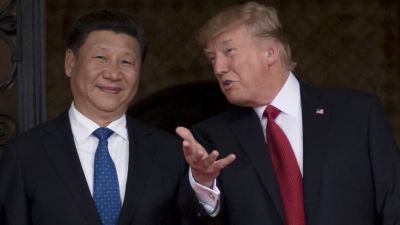
(Photo: Brendan Smialowski/AFP/Getty Images)
This post originally appeared at Common Dreams
The last couple of years have been boom years for philanthropy. Total donations from individuals, foundations and corporations rose in 2015 to over $373 billion, a 10-percent increase since 2013.
But behind this statistic is a troubling trend. The charitable sector is getting a growing number of mega-donations from wealthy donors and experiencing a simultaneous decline in donations by low and middle-income households.
According to new study that we co-authored, Gilded Giving: Top Heavy Philanthropy in an Age of Extreme Inequality, the US is moving toward a philanthropic sector dominated and controlled by billionaire mega-donors, their foundations and donor-advised funds. This has dangerous implications for the independent nonprofit sector and the health of US democracy.
Charitable contributions by the wealthy have risen significantly in the last decades. Between 2003 and 2013, itemized contributions from people making $10 million or more increased by 104 percent. The number of private grant-making foundations, mostly established by wealthy individuals and their families, doubled since 1993, from 43,956 to 86,726 in 2015.
Meanwhile, charitable giving by low and middle-income donors has steadily declined. From 2003 to 2013, itemized charitable deductions by donors making less than $100,000 declined by 34 percent. And, according to one estimate, the number of low-dollar and midrange donors giving to national charities declined by 25 percent from 2005 to 2015.
One explanation is rising economic inequality. There is a high correlation between donor declines and economic insecurity indicators such as declining homeownership and employment rates.
This top-heavy philanthropy is a danger to the independent nonprofit sector, as it contributes to funding unpredictability and a growing focus on wooing a finite, relatively small number of mega-donors. It also increases the risk of mission drift, as wealthy donors press their particular interests and projects.
But the largest peril is for our wider civil society and democracy. Unchecked, private foundations can become blocks of concentrated unaccountable power with considerable clout in shaping our laws and culture. They can become extensions of personal power, privilege and influence for a handful of families.
This can lead to a wide range of abuses. In 2013, the Minnesota-based Otto Bremer Foundation gave out $38 million in grants and paid their three trustees a total of $1.2 million to make the decisions. Two of the trustees, Brian Lipchultz and Daniel Reardon, paid themselves over $465,000 each.
“It’s just an outrageously high level of compensation for trustee service,” said Aaron Dorfman, executive director of the National Committee for Responsive Philanthropy.
“These institutions get tremendously preferential tax treatment,” he told The Pioneer Press. “And because of the tax-exempt status they enjoy, the rest of us pay higher taxes and, in effect, subsidize nonprofit tax-exempt charitable foundations.”
Indeed, taxpayers have a legitimate interest in the conduct of private charities. Through tax deductions, we subsidize up to 50 cents of every dollar that wealthy donors shift into the charitable sector. The wealthier the donor and the bigger the gift, the greater the amount of tax revenue lost from income and estate taxes.
Some wealthy people use foundations and donor-advised funds as an extension of a tax avoidance strategy, along with trusts and offshore tax havens.
When reducing or avoiding taxes is a significant driver of philanthropic giving, the urgency of moving funds directly to charities on the ground becomes a secondary consideration. By giving to private foundations, donors receive immediate tax deductions for the full amount of their donations, but are required to make only minimal payouts over time.
A similar warehousing of wealth occurs with donor-advised funds. The Fidelity Charitable Fund, an arm of Fidelity Investments, just surpassed United Way as the largest recipient of charitable contributions. These philanthropic assets may sit for years or decades after the initial tax deduction has been taken and before any significant payout is made. Charity Watch estimates that the growth of donor-advised funds has delayed an estimated $15 billion in donations to public charities.
And, in a troubling number of cases, wealthy families of all political persuasions have been able to deploy private foundation assets to advance a narrow set of interests under the guise of philanthropy.
For example, donors can use large donations to private schools and universities to secure admissions for their progeny. Foundations in affluent public school districts allow parents to make tax-deductible contributions to support their children’s schools, compounding inequalities between rich and poor school districts. Wealthy donors fund nonprofit think tanks and tax exempt advocacy groups that further a wealth-protection agenda in the political arena. As journalist Jane Mayer has documented in her book Dark Money: The Hidden History of the Billionaires Behind the Rise of the Radical Right, a segment of multimillionaire donors have “weaponized philanthropy” to advance a self-interested public policy agenda of tax cuts, deregulation, and opposition to climate change policy.
The last time the legal rules governing the charitable sector were overhauled was 1969. Congress should modernize these rules, in this new era of inequality, to protect the independent sector, expand giving by low and middle-income households, prohibit the warehousing of wealth and protect the integrity of our tax system.
Rule changes could include increasing incentives for low and middle-income donors, capping the charitable deduction for high-end donors and requiring greater board independence. Rules governing donor-advised funds should require timely distributions. Lawmakers should levy a lifetime cap on tax-deductible charitable giving to ensure that those who possess some of the largest fortunes in the United States cannot use such deductions to entirely dodge tax obligations through donations and bequests.
To fundamentally address the perils of top-heavy philanthropy, however, the public must also demand that policymakers reduce concentrations of wealth and power in our society at large. This includes closing loopholes and restoring steeply progressive income and wealth taxation. And under a Trump administration, we will again be required to defend the federal estate tax, our nation’s only levy on the inherited wealth of multi-millionaires and billionaires.
Without action, we could drift further toward an oligarchy of wealth, with family-controlled philanthropy becoming an extension of private power.





